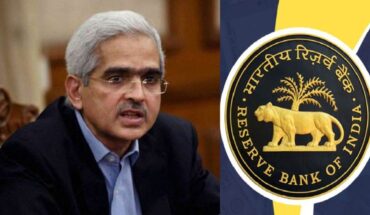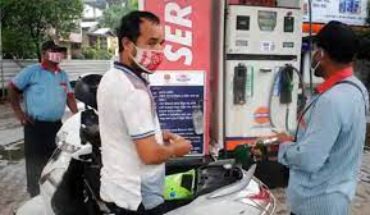Indian pharmaceutical industry is the 3rd largest in the world by volume. 3.5 per cent of total drugs and medicines exported globally are from India. But in value terms, the industry does not fall even in top 10 countries. At the same time, India is also dependent on import of some of the basic raw materials, i.e., bulk drugs which are used to produce the finished dosage formulations. During FY 2018-19, bulk drugs formed 63 per cent of the total pharmaceutical imports in India. 53 bulk drugs/Active Pharmaceutical Ingredients (APIs) were identified by a Committee on Drug Security for which India is heavily dependent on imports only.
In that background, to attain self-reliance as well as to reduce dependence on imports, a Production Linked Incentive (PLI) Scheme was notified on July 21, 2020, for promotion of domestic manufacturing of critical Key Starting Materials (KSMs)/Drug Intermediates (DIs) and Active Pharmaceutical Ingredients (APIs) in India.
Table 1: Target Segments under PLI Scheme for KSMs/DIs/APIs (PLI 1.0)
| Category | Target Segments | Applicant with Global manufacturing Revenue (Rs. Cr. in 2019-20) |
| I | Fermentation based KSMs/Drug Intermediates | Penicillin G, 7-ACA, Erythromycin, Thiocynate (TIOC) and Clavulanic Acid |
| II | Fermentation based niche KSMs/Drug Intermediates/APIs | Neomycin, Gentamycin, Betamethasone, Dexamethasone, Prednisolone, Rifampicin, Vitamin B1, Clindamycin Base, Streptomycin and Tetracycline |
| III | Key Chemical Synthesis based KSMs/Drug Intermediates | 1,1 Cyclohexane Diacetic Acid (CDA), 2-Methyl-5Nitro-Imidazole (2-MNI), Dicyandiamide (DCDA) and Para amino phenol |
| IV | Other Chemical Synthesis based KSMs/Drug Intermediates/APIs | Meropenem, Atorvastatin, Olmesartan, Valsartan, Losartan, Levofloxacin, Sulfadiazine, Ciprofloxacin, Ofloxacin, Norfloxacin, Artesunate, Telmisartan, Aspirin, Diclofenac Sodium, Levetiracetam, Carbidopa, Ritonavir, Lopinavir, Acyclovir, Carbamazepine, Oxcarbazepine, Vitamin B6 and Levodopa |
Source: Compiled from Notification on PLI Scheme dated July 1, 2020
On July 21, 2020, itself, another Scheme for Promotion of Bulk Drug Parks was notified with three objectives namely, (i) to promote setting up of bulk drug parks in the country for providing easy access to world class common infrastructure facilities to bulk drug units located in the parks in order to significantly bring down the manufacturing cost of bulk drugs and thereby make India self-reliant in bulk drugs by increasing the competitiveness of the domestic bulk drug industry, (ii) to help industry meet the standards of environment at a reduced cost through innovative methods of common waste management system, and (iii) to exploit the benefits arising due to optimization of resources and economies of scale. Maximum assistance under the Scheme for one Bulk Drug Park was kept limited to Rs. 1000 Crore.
Table 2: Eligibility Threshold Criteria under PLI Scheme for KSMs/DIs/APIs (PLI 1.0)
| Category | Target Segments | Threshold Investment (Rs. in Cr.) |
| I | Fermentation based KSMs/Drug Intermediates | 400 |
| II | Fermentation based niche KSMs/Drug Intermediates/APIs | 50 |
| III | Key Chemical Synthesis based KSMs/Drug Intermediates | 50 |
| IV | Other Chemical Synthesis based KSMs/Drug Intermediates/APIs | 20 |
Source: Compiled from Notification on PLI Scheme dated July 1, 2020
Second PLI Scheme on Pharmaceuticals related notification was issued on March 3, 3021 with the objective to enhance India’s manufacturing capabilities by increasing investment and production in the sector and contributing to product diversification to ‘high value goods’ in the pharmaceutical industry. Another objective was to create global champions out of India who have the potential to grow in ‘size and scale’ using cutting-edge technology and thereby penetrate the global value chains.
Table 3: Target Group under PLI Scheme (PLI 2.0)
| Group | Applicant with Global manufacturing Revenue (Rs. Cr. in 2019-20) |
| Group A | ≥ 5,000 |
| Group B | 500 – 5,000 |
| Group C | <500 |
Source: Compiled from Notification on PLI Scheme dated March 3, 2021
Total quantum of incentives worth Rs. 15,000 Crore was to be allocated among target groups as Rs. 11,000 Crore to Group A applicants, Rs. 2,250 Crore to Group B applicants, and Rs. 1,750 Crore to Group C applicants.
Chart 1: – PLI Schemes for Bulk Drugs, Pharmaceuticals and Medical Devices

Notification related to the Scheme for Promotion of Medical Devices Parks was issued on July 21, 2020, and this superseded earlier notification. Maximum assistance for one Medical Device Park was limited to Rs. 100 Crore and total financial outlay for the Scheme was kept as Rs. 400 Crore. The tenure of the scheme was from FY 2020-21 to FY 2024-25. The Objective of the scheme was to boost domestic manufacturing and attract large investments in the Medical Devices Sector. Final approvals for financial assistance were granted to the States of Himachal Pradesh, Madhya Pradesh, Tamil Nadu, and Uttar Pradesh. On November 29, 2024, Lok Sabha was informed that the proposal for setting up of the Medical Device Park at Nalagarh (Himachal Pradesh) has been withdrawn by the State Government.
On July 27, 2020, guidelines were issued regarding PLI Scheme for promoting domestic manufacturing of medical devices thereby focusing on four target segments namely, (i) Cancer, Radiotherapy medical devices, (ii) Radiology & Imaging medical devices and nuclear imaging devices, (iii) Anaesthetics & Cardio-Respiratory medical devise including Catheters of Cardio Respiratory Category & Renal Care medical devices, and (iv) All implants including implantable electronic devices.
Table 4: Category of Pharmaceutical goods covered under PLI 2.0
| Category | Pharmaceutical Goods Covered |
| 1 | Bio-pharmaceuticals, Complex generic drugs, Patented drugs or drugs nearing patent expiry, Cell based or gene therapy drugs, Orphan drugs, Special empty capsules like HPMC, Pullulan, enteric etc., Complex excipients, Phyto-pharmaceuticals, and Other drugs as approved |
| 2 | Active Pharmaceutical Ingredients, Key Starting Materials, Drug Intermediates |
| 3 | Repurposed drugs, Auto immune drugs, anti-cancer drugs, anti-diabetic drugs, anti-infective drugs, cardiovascular drugs, psychotropic drugs and anti- retroviral drugs, In-vitro diagnostic devices, Other drugs as approved, and Other drugs not manufactured in India. |
Source: Compiled from Notification on PLI Scheme dated March 3, 2021
Tenure of the Scheme is from FY 2020-21 to FY 2028-29 which included the period for processing of applications (FY 2020-21) and optional gestation period of one year (FY 2021-22).
In Group A, there were 9 domestic companies (Sun Pharma, Aurobindo, Dr. Reddy’s Labs, Lupin, Cadila Healthcare, Cipla, Glenmark Pharma, Intas Pharma, and Torrent Pharma) and 2 MNCs (Mylan Labs and Amneal Pharma) out of 11 applicants approved under PLI Scheme for Pharmaceuticals. In Group B, 9 domestic pharmaceutical companies namely Biocon, MSN Labs, Wockhardt, Alembic Pharma, Emcure Pharma, Macleods Pharma, Biological E, Natco Pharma, and Strides Pharma Science) got approval. In Group C, 35 applicants which included 20 Micro, Small and Medium Enterprises (MSMEs) and 15 Non-MSMEs, got approval.
On February 21, 2023, under the PLI 1.0, an investment of Rs. 2,019 Crore was reported against a committed investment of Rs. 4,138 Crore. About 1,900 persons got employment under the scheme. By early December 2024, investment touched the figure of Rs. 4,155.77 Crore, and employment generated under the Scheme increased to 4,241 persons. Further, the cumulative sales made by applicants touched Rs. 1,330.82 Crores that included exports amounting to Rs. 389.82 Crores. By mid-February 2023, i.e., in the first year of PLI Scheme 2.0 implementation, an investment of Rs. 16,199 Crore was made by 55 applicants against expected investment of Rs. 17,425 Crore. By that time, about 23,000 persons got employment under the Scheme. The first tranche of incentives was also released.
Under PLI Scheme for Medical Devices, 21 applicants were selected. An investment of Rs. 714 Crores was reported against the committed investment of Rs. 1,059 Crores by February 21, 2023. About 2,900 persons got employment under the Scheme. On March 2, 2024, on inauguration of 27 greenfield bulk drug park projects and 13 greenfield manufacturing plants for medical devices under the PLI Scheme, it was widely reported that on introduction of the PLI Scheme, the net imports of medical devices decreased for the first time in 2023. Up to September 2024, the number of applicants stood at 32, out of which number of greenfield projects were 19 for 44 products. Committed investment increased to Rs. 1,356.96 Crores, and investment realized stood at Rs. 1,057.47 Crores. Gains were visible in terms of cumulative sales too which stood at Rs. 8,039.63 Croes out of which exports formed Rs. 3,844.01 Crores, i.e., exports as a percentage of cumulative sales formed 47.81 per cent of the total.
To conclude, it can be said that initial results are promising under these PLI schemes. PLI 2.0 has the tenure till FY 2028-29 so next four years will determine the direction of Indian pharmaceutical industry to take up lead in value-added products as well as attaining self-sufficiency in critical bulk drugs.
Dr. Anil Kumar Angrish- Associate Professor (Finance and Accounting), Department of Pharmaceutical Management, NIPER, SAS Nagar (Mohali), Punjab
Disclaimer : – Views are personal and do not represent the views of the Institute.






